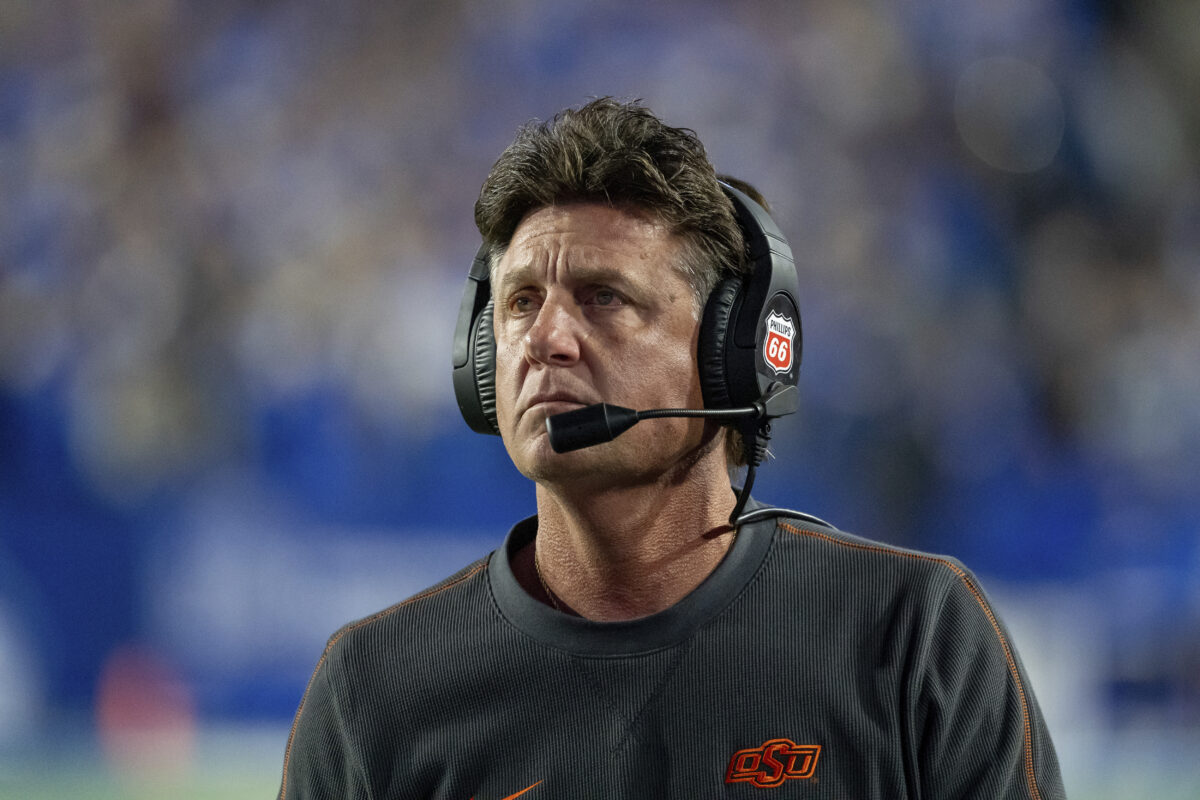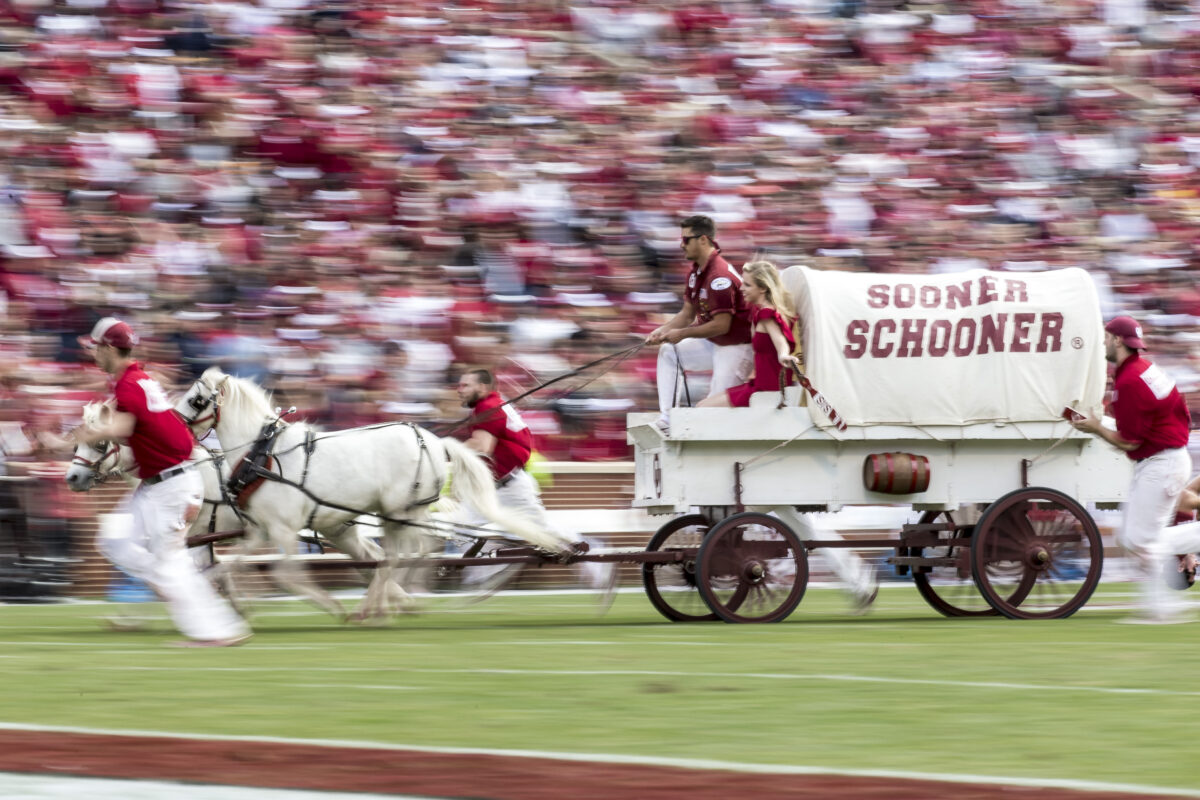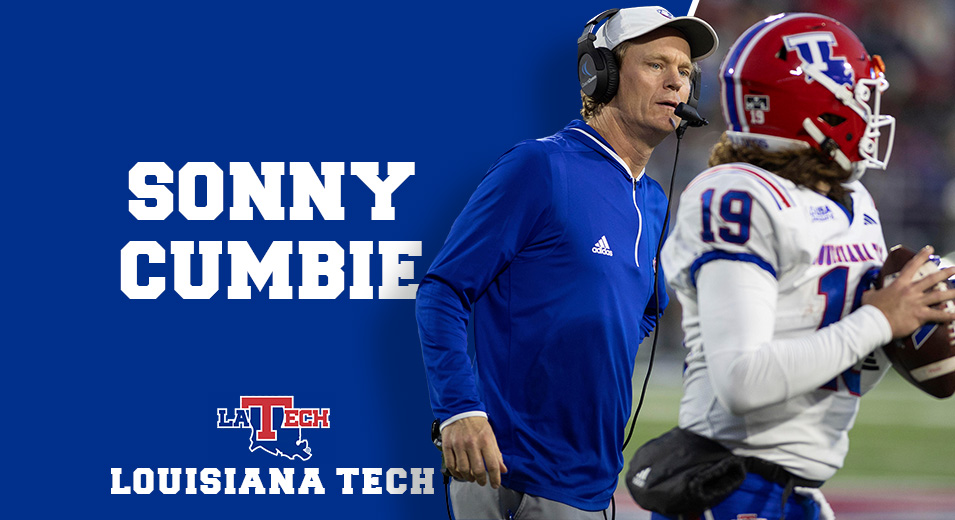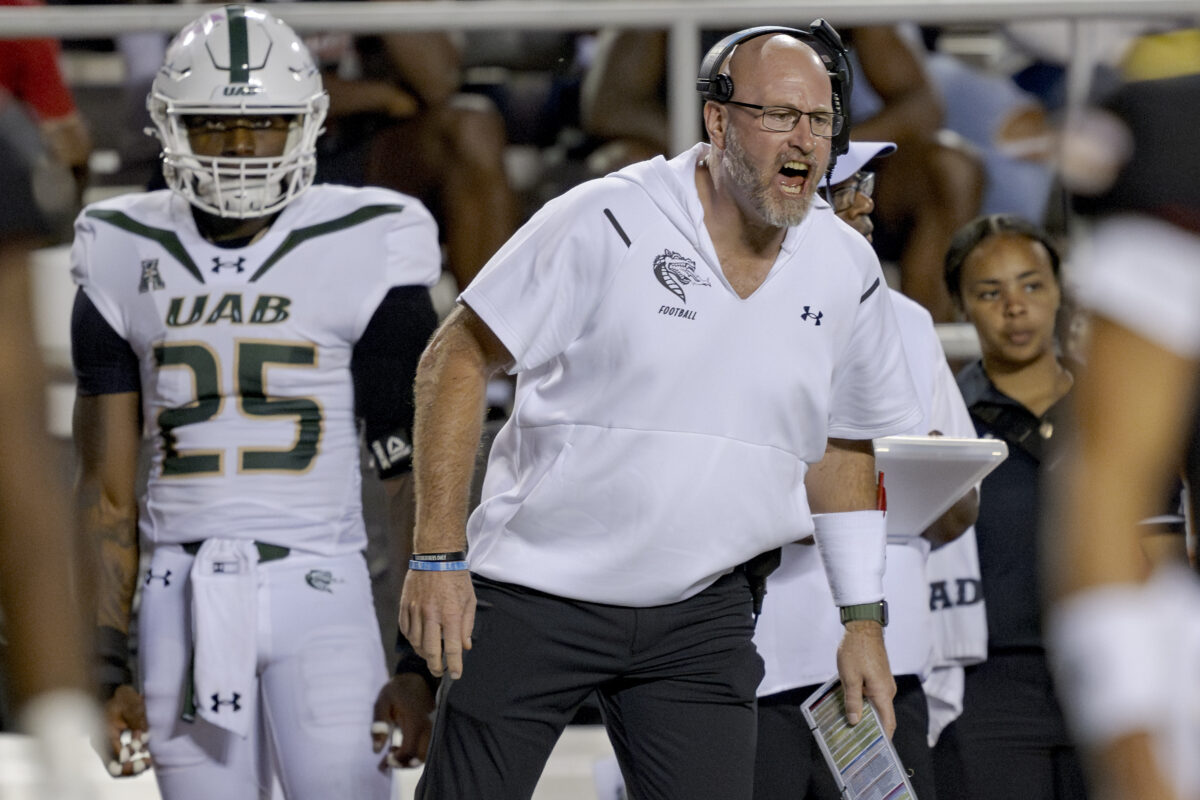These are our preseason rankings.
The starting point for tracking coaching pressure all season long.
Every coach occupies their spot heading into Week 1. But here’s the thing—these rankings are dynamic. They move every single week based on wins, losses, and the political reality inside each program.
Someone in our Top 5 can win their way down the list. It’s equally possible for a coach ranked 100th out of 136 to find themselves in serious trouble by October.
The hot seat never stays still.
That’s why you need to check back every Tuesday during football season. We’ll show you who’s trending down (breathing easier) and who’s trending up (heading for trouble).
Because in college football, your job security changes faster than a fumble recovery.
Here are the coaches starting the season in the most danger:
1. Sonny Cumbie, Louisiana Tech
Why Sonny Cumbie Owns the Hottest Seat in College Football This Season
Louisiana Tech’s Sonny Cumbie enters Year Four with an 11-26 record and mounting pressure after three consecutive losing seasons.
- His .297 winning percentage and 0.574 Hot Seat Rating signal he’s been underwater since Day One, far below the 1.0 threshold for meeting expectations.
- The trajectory shows no recruiting momentum while fans still remember Skip Holtz’s consistent winning, making patience increasingly scarce.
- Coaches in this position rarely recover—by Year Four, you either show tangible progress or the program shows you the door.
Unless Cumbie delivers a miracle turnaround in 2025, his seat isn’t just hot—it’s burning.
2. Scott Satterfield, Cincinnati
The Six-Win Ultimatum: Why Scott Satterfield’s Job—and Cincinnati’s Future—Hangs in the Balance In 2025
Scott Satterfield is out of time after two bruising, back-to-back losing seasons at Cincinnati, with everything on the line across twelve Saturdays.
- He’s trailing the ghost of Luke Fickell’s 53-10 legacy and playoff success, while his own .333 win rate signals trouble for a fanbase starved for relevance.
- Nine months removed from five straight losses and high-profile staff departures, every decision is under the microscope as he feels the pressure of his buyout clause.
- Quarterback Brendan Sorsby must cut turnovers while the team needs six wins for bowl eligibility—anything less might mean packing bags.
For a proud program where mediocrity isn’t an option, “hot seat” might not be hot enough in 2025.
3. Joe Moorhead, Akron
Joe Moorhead’s Statistical Masterpiece of Losing
Joe Moorhead has cracked the code on making college football statistics look respectable while losing games at an alarming rate.
- His Akron teams generate impressive numbers—like Ben Finley’s 378 yards and four touchdowns in an 11-point loss to Buffalo—but have dropped 10 one-score games in two years, including five by a field goal or less.
- With a 0.659 Hot Seat Rating and an 8-28 record over three seasons, Moorhead’s offensive schemes produce yards and individual stats that suggest competence, yet his teams consistently fail when games hang in the balance.
- The cruel mathematics reveal that when you have explosive receivers, a productive quarterback, and reliable kicking, but still struggle to win, the problem isn’t talent—it’s execution under pressure.
Moorhead was supposed to be the offensive mastermind who would solve Akron’s perpetual losing problem, but instead became the poster child for why coordinating success and leading it require entirely different skill sets.
4. Brent Venables, Oklahoma
Brent Venables Faces 8 Top 25 Teams In 2025. Here’s Why This Will Be His Last Season At Oklahoma
Most people think coaching success is about X’s and O’s, but Brent Venables learned the hard way that your past success means nothing when the game changes around you.
- His first SEC season at Oklahoma produced a 6-7 record with just 24 points per game—the program’s lowest scoring output since the 1990s—proving that elite coordinator credentials don’t automatically translate to head coaching success in a new conference.
- The SEC’s unforgiving arms race exposes recruiting misses and tactical weaknesses that Oklahoma could hide in the Big 12, with eight projected Top 25 opponents in 2025, including Michigan, LSU, Texas, Alabama, and Tennessee.
- 247Sports ranks Venables as college football’s most embattled coach entering 2025, with Vegas projecting a middle-tier SEC finish while fans demand results over explanations from their well-resourced program.
In Norman, nobody gets remembered for coming close—and anything less than a winning season could end his tenure.
5. Trent Dilfer, UAB
UAB Passed Over A 7-6 Interim Coach To Hire Trent Dilfer. 2 Years Later, Dilfer Is 7-17, And That Coach Beat Him 32-6.
UAB Athletic Director Mark Ingram chose the shiny object in 2022, hiring former NFL quarterback Trent Dilfer over interim coach Bryant Vincent despite Vincent’s 7-6 record.
- Two years later, Dilfer sits at 7-17 with zero road wins while Vincent’s Louisiana Monroe team beat Dilfer’s UAB squad 32-6 this season, highlighting the missed opportunity.
- Athletic directors consistently get starstruck by NFL pedigree, mistaking name recognition for competence and assuming Super Bowl rings translate to recruiting ability, ignoring that college coaching requires relationship-building with 18-year-olds, not managing millionaire adults.
- Former NFL players often struggle because they’ve never learned to develop teenagers, recruit prospects, manage boosters, or navigate the transfer portal—skills that proven college coaches possess for a reason.
The next time an athletic director gets stars in their eyes over a former NFL player, remember that sometimes the best hire is the one standing right in front of you, even if they’re not the most exciting candidate.
6. Hugh Freeze, Auburn
Auburn’s Hugh Freeze Sits At #6 On Our Hot Seat Rankings. Here’s Why 2025 Will Either Save His Career Or End It.
Hugh Freeze has methodically eliminated every excuse a coach could have after two straight losing seasons at Auburn, leaving himself nowhere to hide in Year 3.
- He landed Jackson Arnold, a former 5-star transfer quarterback from Oklahoma, while building back-to-back top-10 recruiting classes filled with blue-chip prospects and adding 19 strategic transfer portal additions.
- Auburn avoids Texas this season and hosts both Alabama and Georgia at home, creating a more favorable schedule than recent years, while Freeze publicly admits “we’ve got to go to a bowl game.”
- In 12 seasons as a head coach, Freeze has missed bowl eligibility exactly twice—his scandal-plagued final year at Ole Miss and his rebuilding year at Auburn—and lightning doesn’t strike three times for coaches who want to survive.
Hugh Freeze has built the perfect team to save his career, and now he has to prove he deserves it.
7. Brent Pry, Virginia Tech
Virginia Tech’s Brent Pry Fired 3 Coaches And Replaced 30 Players To Save His Job. Here’s Why These Desperate Moves Will Get Him Fired Instead
Most people think college football coaches get fired for losing games, but they actually get fired for making desperate moves that prove they never understood why they were losing in the first place.
- After going 16-21 over three seasons, Virginia Tech’s Brent Pry fired his coordinators not strategically but politically, sending the message that “the problem wasn’t me—it was them” while proving he can’t take responsibility for his failures.
- Pry lost his top running back (1,159 yards, 15 TDs) and best pass rusher (16 sacks) to the transfer portal, then added 30 strangers who’ve never played together, creating roster panic instead of building chemistry that takes years to develop.
- He’s asking the impossible: 30 new players to trust each other, learn new systems from two new coordinators, and execute under pressure while their head coach’s job hangs in the balance—a recipe for chaos and meltdown.
Once you start making desperate moves, you’ve already lost because you’re no longer building a program—you’re just surviving until you get fired.
8. Tony Elliott, Virginia
Tony Elliott Has 8 Regular Season Games To Save His Virginia Coaching Career
Tony Elliott enters 2025 with 11 wins and 23 losses over three years at Virginia, but there’s only one number that matters now: 8.
- Elliott finally has everything he said he needed—Chandler Morris from TCU (5,500+ career passing yards), Mitchell Melton from Ohio State, 7 home games, and no Clemson or Miami on the schedule—which means he’s completely out of excuses.
- His track record suggests deeper problems with 4-8 records in one-score games, averaging 5+ penalties per game, and losing his starting quarterback to the transfer portal—patterns that go beyond bad luck.
- The math is brutally simple: win 8 games and keep his job, win 7 or fewer and update his LinkedIn, with no middle ground or “moral victory” season that saves him after three years of disappointment.
Elliott finally has the perfect setup for success, and 2025 is his moment to prove he deserves it.
9. Sam Pittman, Arkansas
Sam Pittman Has A 30-31 Record At Arkansas. Here’s Why He’s The SEC’s Most Undervalued Coach
Sam Pittman enters 2025 with a 30-31 overall record and the narrative that another mediocre season means goodbye, but here’s what nobody talks about: he’s the SEC’s third-longest tenured coach with his current team.
- Only Kirby Smart at Georgia and Mark Stoops at Kentucky have been around longer, proving that while other programs churn through coaches, Arkansas stuck with their guy through rebuilds, growing pains, and SEC brutality.
- Pittman has built five years of recruiting relationships, institutional knowledge most coaches never get, a cultural foundation that takes time to develop, and three bowl wins that demonstrate his program’s progress.
- With Taylen Green returning (3,756 total yards), Bobby Petrino in his second year calling plays, and a transfer portal haul ranked 8th nationally, the complete roster reconstruction offers a fresh start for his foundation to bear fruit.
The 2025 season will prove whether college football still rewards patience or if it only rewards wins—and whether the best hire is sometimes the guy who stays long enough to see his vision through.
10. Billy Napier, Florida
Florida’s Championship Window Opens in 2025
Most college football fans think Florida is still years away from competing for titles, but the Gators have quietly assembled all the pieces for a breakthrough season in 2025.
- DJ Lagway isn’t just another promising quarterback—he’s a generational talent who went 6-1 in his starts as a true freshman, beating ranked LSU and Ole Miss while leading all SEC returners with a 52.8% completion rate on deep balls.
- Florida’s top-10 recruiting class brings elite defensive backs and game-changing receivers, while four returning offensive line starters provide crucial stability and defensive coaching upgrades address last season’s major weaknesses.
- After winning just 11 games in Napier’s first two seasons, the Gators closed 2024 with four straight wins and their first bowl victory since 2019, showing the culture has shifted when nobody was paying attention.
Championship windows don’t announce themselves with fanfare—they open quietly when talent meets opportunity, and Florida’s window is creaking open right now.
Don’t Miss A Single Coaching Move This Season
These rankings are just the beginning. Every Tuesday, we’ll update these hot seat rankings based on the weekend’s results, showing you exactly who’s trending up (heading for trouble) and who’s trending down (breathing easier). Because in college football, a coach can go from safe to fired in three weeks flat.
But here’s where it gets really interesting: our Friday newsletters dive deep into the stories behind the rankings. We’ll break down the political dynamics inside each program, analyze recruiting momentum, and give you the insider perspective on which coaches are actually fighting for their jobs versus which ones just look like they are.
Think of it as your weekly coaching intelligence report. While everyone else is guessing who might get fired, you’ll know exactly why it’s happening and when it’s coming.
Subscribe to our newsletter and get:
- Tuesday Rankings: Updated hot seat positions for all 136 coaches
- Friday Deep Dives: The real stories behind the coaching pressure
- Insider analysis you won’t find anywhere else
- First access to coaching movement predictions before they hit the mainstream
The hot seat never stays still, and neither should your information advantage.
Because when the coaching carousel starts spinning, you’ll want to be ahead of the story, not chasing it.









